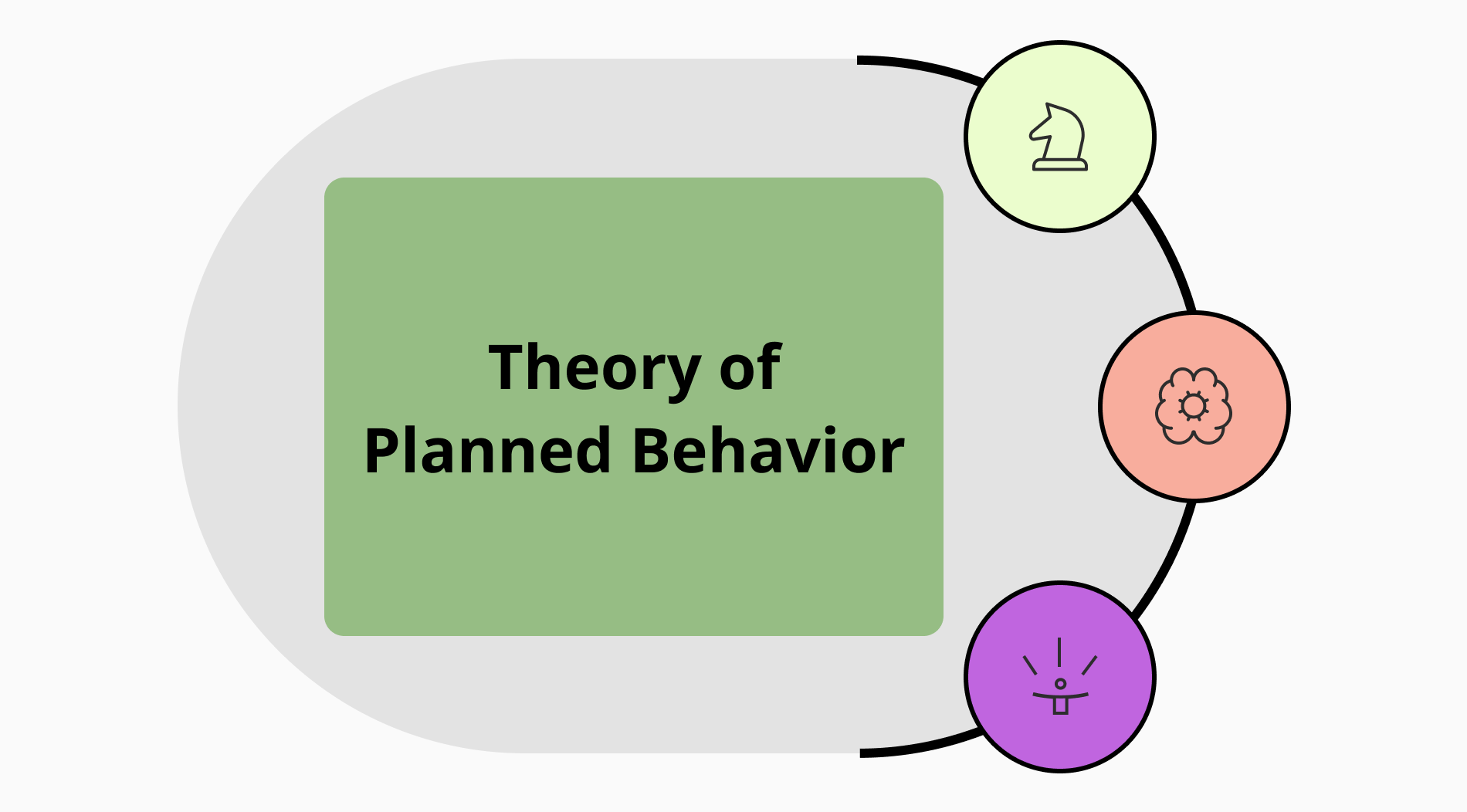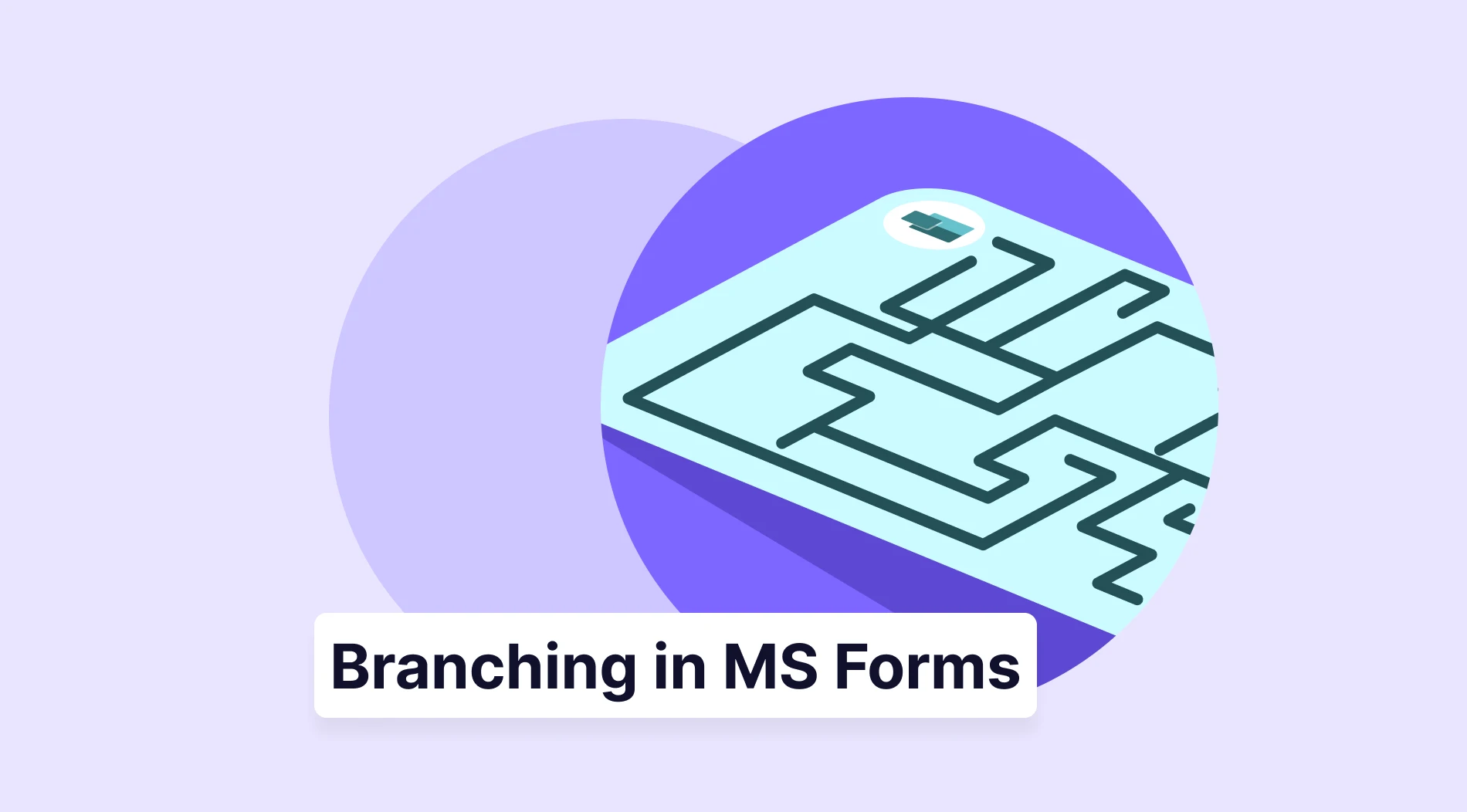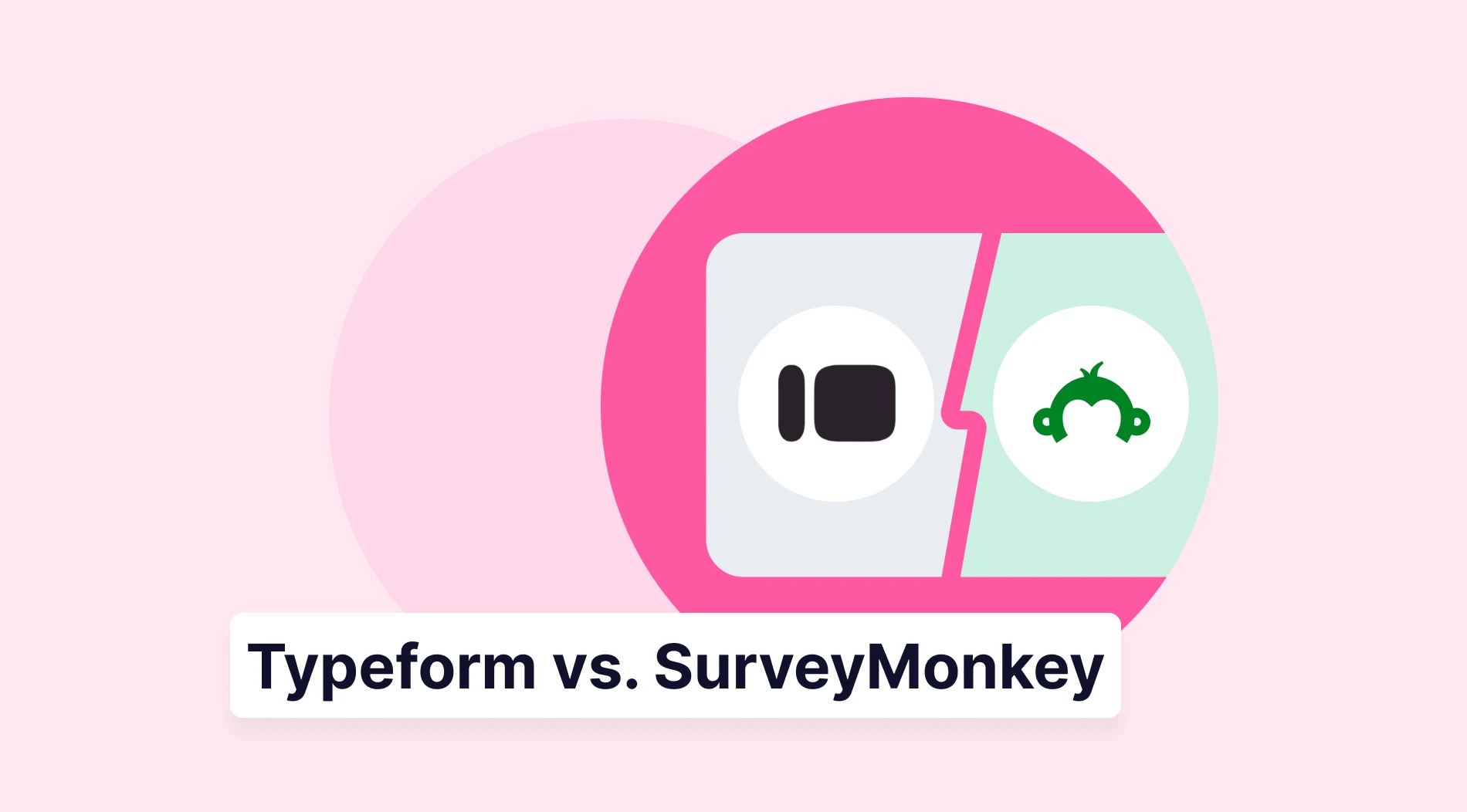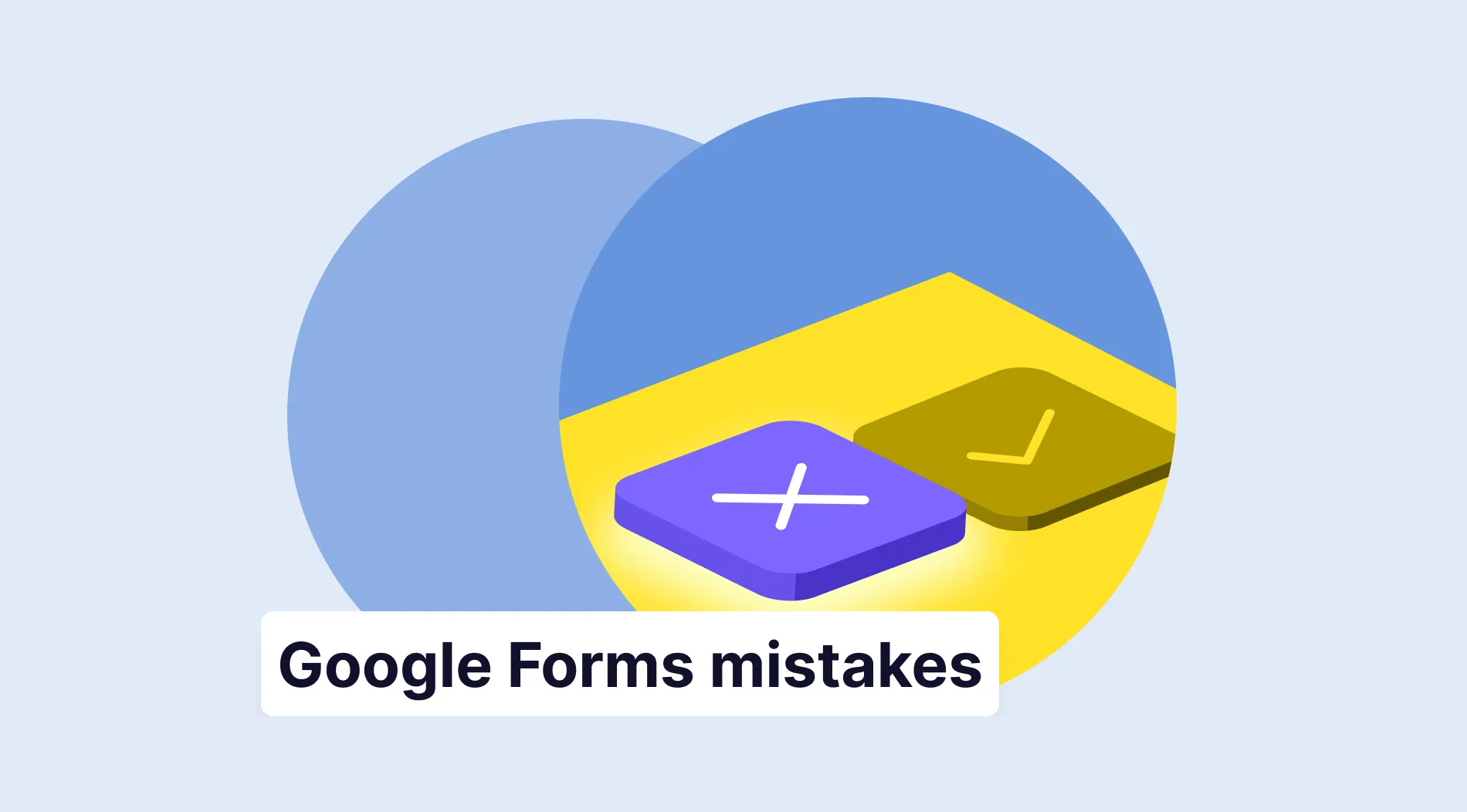In today’s complex business world, many models and frameworks are available. Many decision-making models are tailored for businesses. Models developed in other fields (sociology, military, etc.) can also be adapted to businesses. For instance, a psychological model may apply to business planning or decision-making.
This article will help you discover a psychological model, the Theory of Planned Behavior. It helps predict human behavior. We will define it, show the areas where it may be useful, give some examples, and answer some frequently asked questions about it. Let’s delve into the model to understand behavioral intentions and how it applies to businesses.
First things first: What is the theory of planned behavior?
The Theory of Planned Behavior Model (TPB) is a model that predicts how people behave. It is based on three factors: attitudes, subjective norms, and perceived behavioral control.
In other words, it looks at what humans think about the behavior, what others think about it, and how easy or hard they think it is to do.
The theory was developed by Icek Ajzen in 1985. Today, TPB is widely used in various fields to understand and predict behaviors such as health-related, consumer, and environmental behaviors. It says that people’s intentions to act are the main factor influencing their behavior. The TPB focuses on the connection between intention and behavior.
Theory of planned behavior: Ajzen’s framework
Icek Ajzen’s theory of planned behavior is a framework for understanding the connection between our intentions and behaviors. It also takes into account social norms, normative beliefs, and specific behaviors. It suggests that behavioral intentions are determined by three factors: attitude, subjective norms, and perceived behavioral control. Let’s examine those factors more closely:
1- Attitudes
Attitudes refer to individuals’ overall evaluation or thoughts about doing something. An attitude towards positive behavior increases the possibility of intention to perform it. For example, if someone enjoys exercising and believes it is beneficial for their body, they are more inclined to plan more physical activity.
Conversely, negative attitudes may deter behavior. Someone who dislikes exercise or perceives it as a harmful activity will refrain from exercising regularly or making plans for exercises. We can say that attitudes feed our behaviors and how we perform them.
2- Subjective norms
Subjective norms involve perceptions of social pressure or influence regarding a behavior. People consider whether their family, friends, or colleagues approve or disapprove of their behavior. This affects the way they behave. For example, if your friend encourages healthy eating, you will be more likely to plan to eat healthy foods.
On the contrary, if your friends discourage certain behaviors, in this case eating healthy food, you may be less inclined to perform this behavior and eat junk food with them. It is safe to say that subjective norms shape our thinking, intentions and behaviors.
3- Perceived behavioral control
The third factor of the TPB is perceived behavioral control. It relates to the beliefs about the person’s ability to perform a behavior. It may also refer to the perceived ease or difficulty in conducting behaviors. Higher perception strengthens the intentions and makes it easier for people to perform an action.
For example, someone who believes that they have the skills and resources to start a business is more likely to try to become an entrepreneur and act on launching their company. However, a low perceived control may weaken intentions and deter the behavior.
Where to use the theory of planned behavior?
The Theory of Planned Behavior (TPB) finds application in various fields where understanding and predicting human behavior is crucial. Its versatility makes it applicable across diverse fields where understanding human behavior and intentions is essential for designing effective interventions, policies, and campaigns. Here are some of these fields:
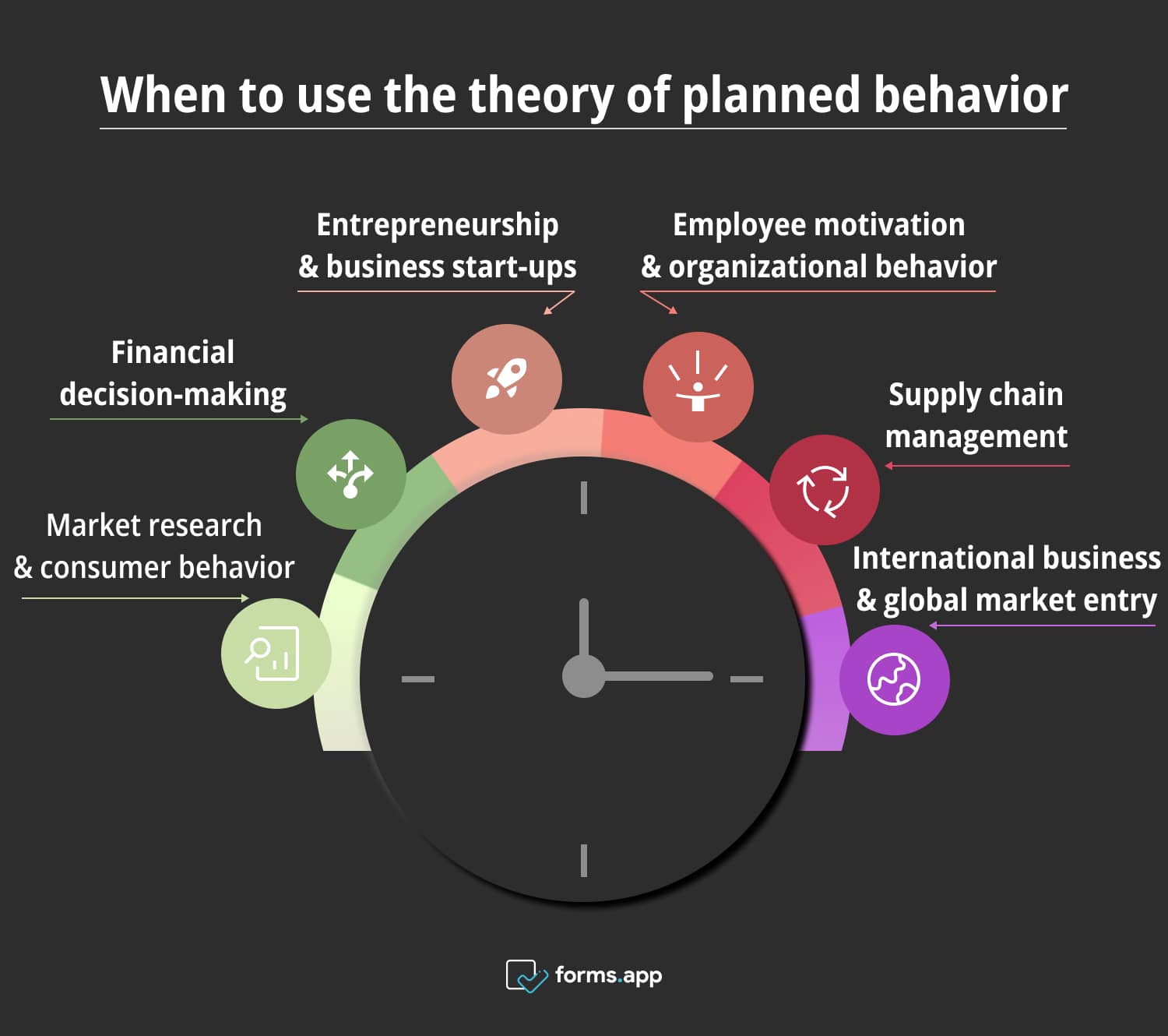
Right times to use the theory of planned behavior
- Market research and consumer behavior: TPB helps understand consumer attitudes, intentions and purchase decisions and develop guiding marketing strategies product and branding efforts.
- Financial decision-making: TPB analyzes factors influencing financial behaviors such as saving, investing, borrowing, and retirement planning and helps develop financial policy initiatives.
- Entrepreneurship and business start-ups: TPB applies to entrepreneurial intentions and attitudes towards entrepreneurship and helps foster an entrepreneurial culture.
- Employee motivation and organizational behavior: TPB enables managers to improve employee attitudes, job satisfaction, and intentions to engage in organizational behaviors.
- Supply chain management: TPB can be used to analyze supplier and partner relationships and predict intentions to engage in supply chain practices.
- International business and global market entry: TPB helps evaluate attitudes and intentions towards international expansion, market entry strategies, and cross-cultural business practices.
By applying TPB in these business and economic-related fields, businesses can gain valuable insights into human behavior, anticipate market trends, and develop strategies aligning with consumer preferences and organizational objectives. Although the model emerged in the field of psychology, it is quite helpful for understanding the individual/organizational psychology in businesses.
Why use the theory of planned behavior?
The Theory of Planned Behavior is valuable in understanding and predicting human behavior. It offers a comprehensive framework for understanding, predicting, and influencing human behavior. Researchers, managers, and policymakers can develop more effective strategies for promoting positive behavior change and achieving desired outcomes. Let’s look at some of the reasons for using it:

Reasons to use the theory of planned behavior
- Structured framework for understanding behavior: It provides a systematic approach to understanding human behavior. It analyzes attitudes, subjective norms, and perceived behavioral control.
- Applicability across various fields: TPB’s structured approach is valuable in psychology, marketing, and public health.
- Addressing barriers and communication strategies: It helps develop interventions for specific barriers and enables the creation of communication strategies for promoting positive behavior change.
- Predictive power for evaluation: The model’s predictive capacity allows for the evaluation of interventions over time. It makes it easier to decide about strategies with maximum effectiveness.
As we can see, TPB’s structured framework for understanding behavior is applicable in various fields and is very helpful to address certain barriers and develop communication strategies. It also enables us to develop a capacity and give effective decisions about strategies.
Examples of the theory of planned behavior
So far, we have covered the theory of planned behavior with all its aspects and talked about which fields it applies to and why it is practical to use it. Since it is a framework originating from the field of psychology, it may come across a bit abstract and theoretical.
But you will be surprised to see how it applies to businesses and is useful in our daily lives. After seeing some instances, you will understand the framework better. Let’s take a look at some theory of planned behavior examples:
1- Samsung
In this scenario, Samsung wants to launch new eco-friendly smartphones. Market research reveals positive attitudes towards sustainability. This attitude also influences customers’ purchase intentions. Collaborations with environmental organizations and celebrities strengthen subjective norms. This boosts social approval and public interest.
Samsung also addresses barriers to purchase by offering affordable pricing and ensuring widespread availability. This enhances the perceived behavioral control. By aligning with the principles of TPB, Samsung effectively influences consumer intentions and enables customers to adopt their new environmentally sustainable products.
2- Ford
In our second scenario, let’s assume that Ford plans to launch a new electric vehicle (EV) model, aligning with positive consumer attitudes toward sustainability. Their marketing highlights EV benefits like reduced emissions. Positive attitudes towards sustainability and EVs increase the purchasing possibility of their customer portfolio.
Ford gets endorsements from environmental organizations and celebrities to reinforce social approval. Recommendations and social media influencers strengthen subjective norms. Also, they invest in infrastructure and support services for EV owners and increase the perceived control over the ownership experience. By addressing barriers to EV ownership, Ford enables customers to make informed decisions and strengthens their purchase intentions.
Frequently asked questions about the theory of planned behavior
As we can see from the scenarios, the theory of planned behavior can apply to businesses. Companies can use this model when launching a new line of products. It also helps them analyze the intentions and behaviors of the customers. That said, let’s take a look at some of the most frequently asked questions about this useful framework:
The Theory of Planned Behavior is a theory of reasoned action. It explains why people behave in a specific way. The model suggests that our attitudes shape our intentions, therefore the behavior. The ideas on what other people expect from us (subjective norms) and how much control we feel we have (perceived behavioral control) help us predict behaviors.
The term “attitude” in the Theory of Planned Behavior refers to how you feel about doing something. For example, if you like exercising because it’s fun and healthy, you are more likely to plan it and do it more often. A positive attitude increases your intention to exercise, and we can say that it has control over your behavior.
The Theory of Planned Behavior (TPB) was proposed by Icek Ajzen in 1988. It is a psychological model for understanding and predicting human behavior. It also enables us to understand the connection between the intention and the behavior. It suggests that behavioral intentions are influenced by attitudes, subjective norms and perceived behavioral control.
The purpose of the Theory of Planned Behavior (TPB) is to provide a framework for understanding and predicting human behavior. It applies to various industries and may be helpful for researchers, managers, and policymakers. By considering attitudes, subjective norms, and perceived behavioral control, TPB enables the development of effective interventions and strategies to promote behavior change.
Final words
To sum up, the Theory of Planned Behavior (TPB) is a framework for understanding and analyzing the connection between human intentions and behaviors. Although it emerged in the field of psychology, it applied to various fields such as business and can be used by managers and policy makers to get a better understanding of their customer profile.
In this article, we have covered the Theory of Planned Behavior (TPB) with all its aspects. We have seen scenarios in which companies apply the model in their policies as a strategy. And last but not least, we answered the frequently asked questions about this model. Now, you can use this psychological model in your business!
- First things first: What is the theory of planned behavior?
- Theory of planned behavior: Ajzen’s framework
- Where to use the theory of planned behavior?
- Why use the theory of planned behavior?
- Examples of the theory of planned behavior
- Frequently asked questions about the theory of planned behavior
- Final words
forms.app, your free form builder
- Unlimited views
- Unlimited questions
- Unlimited notifications
